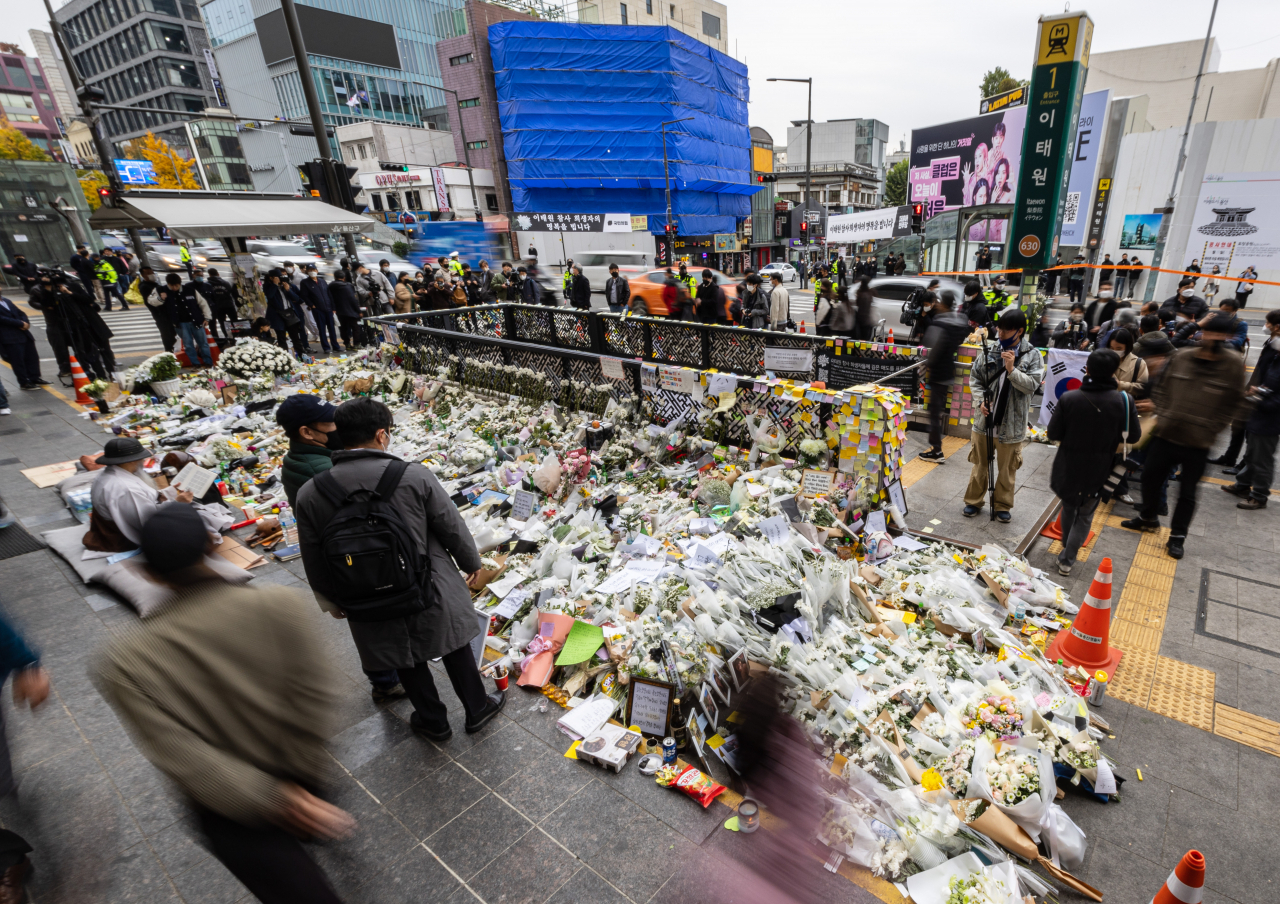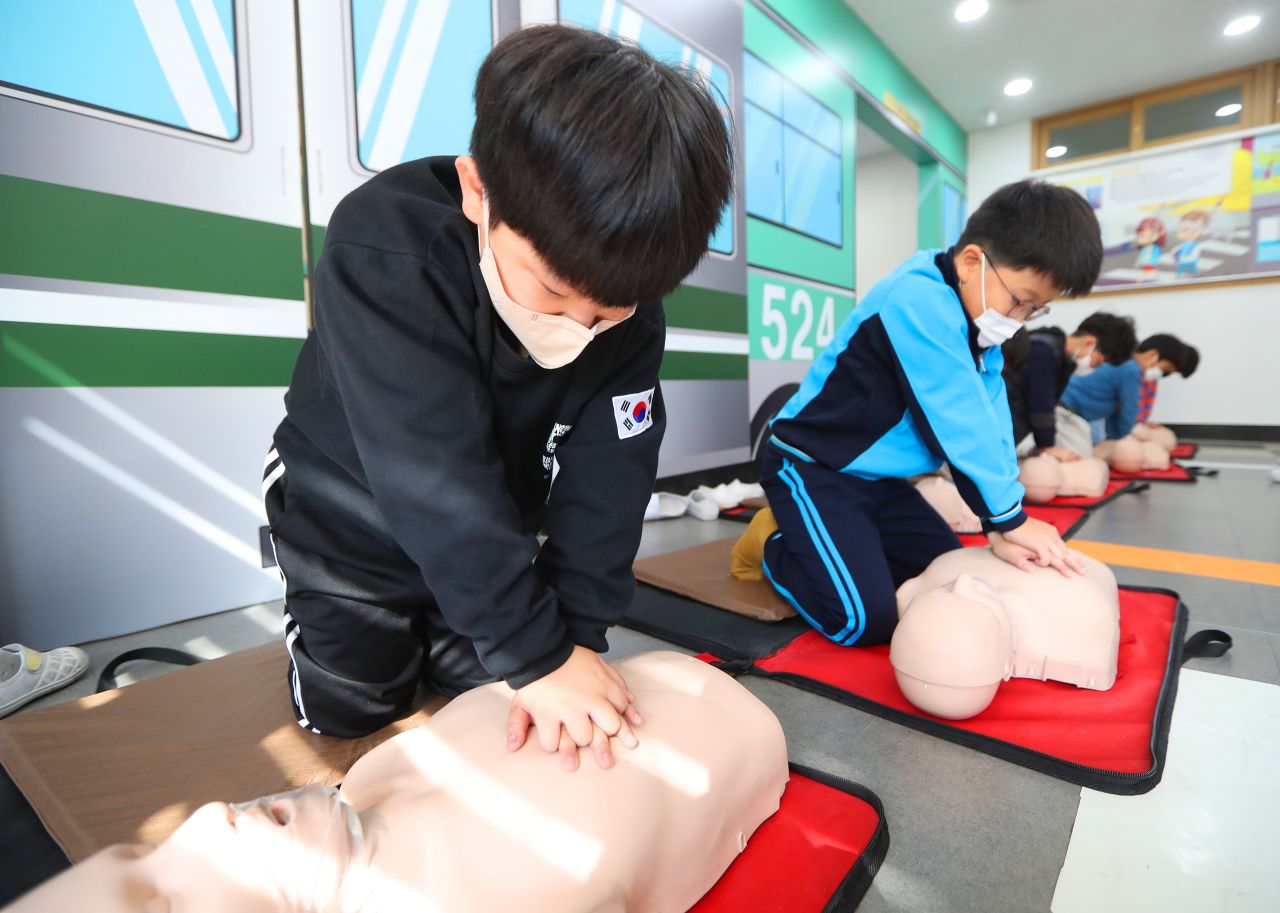A string of safety measures being rolled out by the government shows how much of an impact the loss of 156 lives in last week’s Itaewon tragedy have had on Korean society.
Prime Minister Han Duk-soo on Thursday said there will be a pan-government safety inspection on events where over 10,000 people are expected to partake, requesting regional government bodies to revamp their respective safety manuals.
This was a reaction to the lack of safety measures and efforts by authorities to maintain order during the Itaewon crisis on Saturday, which was cited by experts as the main reason why the situation got out of control. Despite police estimating 100,000 people would be in the area for the Halloween festivities -- and a believed 130,000 actually showing up -- most of the police force was dispatched to political rallies, limiting the local law enforcement's ability to react to the escalating situation.
“(The safety inspection) will check the factors like maximum capacity (of the venue), and dispersing of a crowd when the event ends, thus making thorough preparations in case of accidents,” Han said. He added the government will work on ways for crowd management based on scientific analysis.
Potential dangers at crowded subways
Seoul Metropolitan Government said it will hire experts to analyze the potential danger in subway stations notorious for having a high density of people, such as Sindorim Station, Sadang Station, Jongno 3-ga Station, and major stations of the infamously crowded Line No. 9.
“After the analysis, (the city) will pursue plans such as reinforcing the routes (for passengers along with safety facilities), securing areas for evacuation, and installing CCTVs for monitoring purposes,” a Seoul official said.
 |
(Yonhap) |
Recent reports indicate that some subway cars are theoretically as crowded as the narrow alley where the fatal accident occurred. According to webzine by Seoul Metro, the busiest subway in the city was the section between Guro Station and Guil Station at 6:40 p.m., which had congestion rate of 252 percent.
This means the number of passengers exceeded the maximum capacity of 160 per car by 252 percent, equivalent to about 403 per car. Factoring in the average size of a subway car -- 60.84 square-meters -- this would equate to 6.6 people per square-meter.
During the Itaewon tragedy, it is estimated that there were about 5.6~6.6 people per square meter.
Some of Seoul citizens have claimed that the Itaewon tragedy has already changed how people act in busy subway stations. A person with the Twitter name @iamimg on Sunday claimed that the people were acting in unusually orderly fashion at Konkuk University Station -- a transfer station for Line No. 2 and Line No. 7 and one of the busiest stations in the city.
“It gave me the creeps. The transit section is usually hellish, jammed with the people getting off and getting on. But today, people were waiting on the stairs with spaces between them. I thought (subway) workers were maintaining orders but I was wrong. They were voluntarily maintaining order,” the person wrote. The message was shared over 23,100 times and had 16,600 likes as of Thursday.
Safety training, education on crowding risks
In the aftermath of the Itaewon tragedy, the citizens who voluntarily did CPR to resuscitate the unconscious made news. Amid heightened awareness about the importance of being CPR trained, the government said it will add education courses in emergency situations such as CPR in the national education curriculum.
The Education Ministry said it will add “safety measures in crowded areas” to the standardized safety education for children. One middle school student and five high school student lost their lives in the tragedy.
 |
Second grade students of Seongji Elementary School in Daegue partake in a CPR training on Tuesday. (Yonhap) |
More specifically, the new policy will add practical training and related curriculum for students on how to act in accidents that occur in crowded areas at primary and secondary schools. Preschoolers will be taught to refrain from visiting such areas, and comply with safety procedures when they have to.
Seoul education chief Cho Hee-yeon, after paying his respects to the victims on Sunday, said he will mull measures on reinforcing safety education, such as learning CPR.
According to data by Statistics Korea, the chances of survival when a non-medical staff performed a CPR was 15 percent, compared to 6.2 percent of when the CPR was not performed. This shows even a CPR by a person who is not a licensed physician can potentially save lives.
The Ministry of Gender Equality and Family joined in on teaching youngsters how to protect themselves in emergency situations, saying it will expand CPR education to student facilities and require student counselors and instructors to be certified.
The ministry has distributed emergency care guidelines to teen training facilities and other teen-related facilities, while ordering its affiliated organizations and regional governments to provide CPR and other emergency training to workers and teens using such facilities.



![[Herald Interview] 'Trump will use tariffs as first line of defense for American manufacturing'](http://res.heraldm.com/phpwas/restmb_idxmake.php?idx=644&simg=/content/image/2024/11/26/20241126050017_0.jpg)


![[Health and care] Getting cancer young: Why cancer isn’t just an older person’s battle](http://res.heraldm.com/phpwas/restmb_idxmake.php?idx=644&simg=/content/image/2024/11/26/20241126050043_0.jpg)
